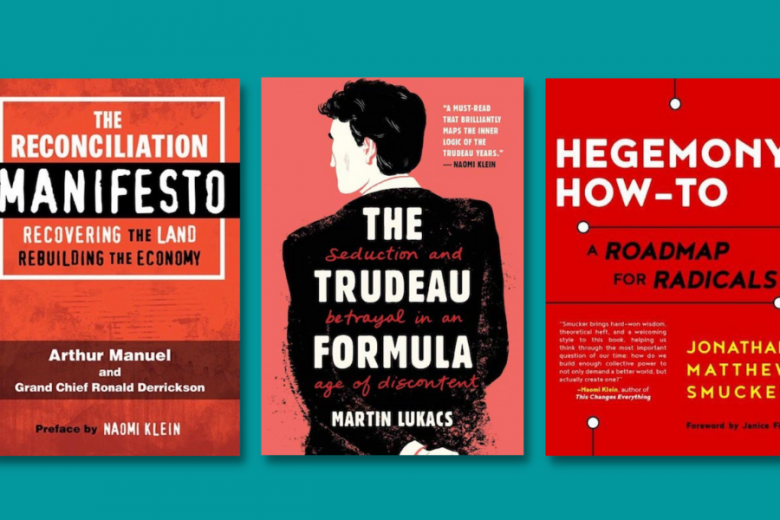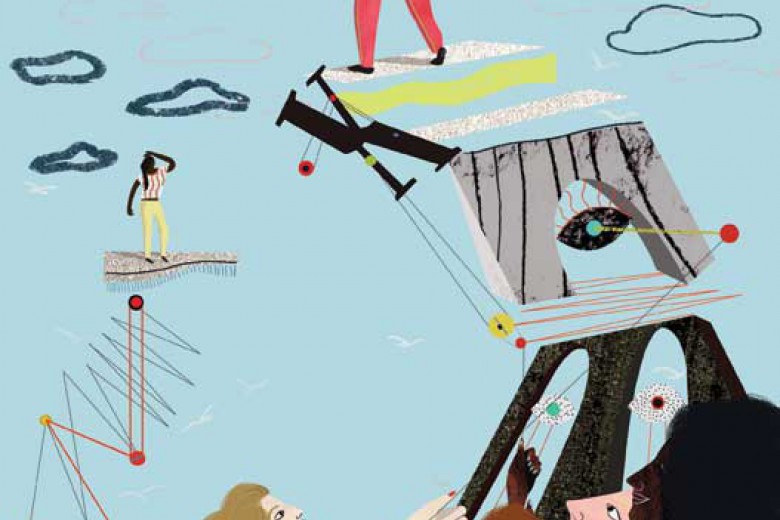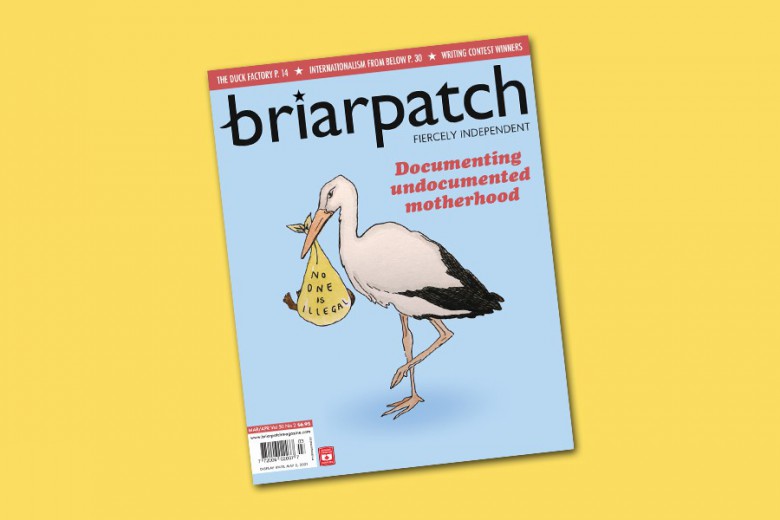
In April 2021, two years after the revolution, Sudanese women keep the revolutionary spirit of 2019 alive at the Women’s March against gender-based violence and discrimination in Khartoum. Photos by Dinan Alasad.
The economic reality of Sudan in 2018 was a ticking time bomb. Fuel and bread prices were skyrocketing and by November banks were running out of money. An increase in the price of school meals led students in Atbara to protest, burning down a government building in the process. The protests spread to Khartoum where outraged civilians took to the streets.
The National Congress Party (NCP), the ruling party at the time led by Omar al-Bashir, violently cracked down on the uprisings. However, the protests persisted until they crystallized into a revolution. Sustained by widespread mutual aid networks and unfailing community solidarity, the revolution sparked hope that we can build a better world.
When the revolution began, Ola Idris was a political science student and Black community club leader at the University of Waterloo. While studying western politics, white supremacy, and capitalism in class, she also learned about the Black and Indigenous resistance, both in Canada and Sudan, to those same systems. Meanwhile, Dinan Alasad was struggling to keep up with a civil engineering degree at the University of Toronto while supporting her community in Sudan. She had left Sudan one year prior to the revolution and she planned to return after completing her education.
Our mothers became friends while attending the University of Khartoum and they introduced us to each other two decades later in the suburbs of Toronto. As the revolution began, our deep connection kept us afloat as we navigated intense events in our personal lives and in our home country, Sudan.
This time was the beginning of our political education; we taught each other about spirituality, community, and radical Sudanese traditions. From the union that has helped us make sense of the world, we share the lessons we learned from the 2019 Sudanese Revolution.
Before the revolution
Ola Sudan has a long and complicated political history. Sudan was colonized by Turkish-Egyptian forces in the 1800s and then by the British in 1899, only gaining independence in 1956. British rule created a melting pot of identities, tribes, regions, and economic and social classes. Khartoum is a haven – albeit a highly militarized one – to many different people from around Sudan and also refugees from surrounding countries embroiled in war.
Decades of war and economic suffering in Sudan reached a fever pitch in 2012 when the government announced a cut to state subsidies for fuel and cooking gas, nearly doubling prices. Building on the energy from the Arab Spring, university students led the charge for thousands of citizens to protest the country’s inequity and threats to their livelihoods.
Growing up outside of Sudan meant I wasn’t invested in Sudan’s politics. I had only ever known one president of my country, Omar al-Bashir, and the most I engaged with Sudanese politics and history was listening to my parents and their friends around the dinner table or tea tray, or in the parking lot. But that changed in 2013 when my cousins called to tell me they were going to attend protests in their neighbourhoods and I began to fear for their safety. At the time, I couldn’t fathom the extent of violence the military dictatorship would inflict on protesters. Now, with hindsight, it’s clear the NCP’s brutality has no bounds.
The government would crack down on protests with enough force that organizers would lose momentum.
The NCP responded to protests with extreme violence, including spraying tear gas, shooting live ammunition, abducting community members, and subjecting protesters to indefinite detentions, during which military personnel subjected them to humiliating and violent acts like shaving their hair and raping them.
The protests in 2013 were the first time the regime introduced the Rapid Support Forces (RSF) to the capital to quell the uprising, killing hundreds of protesters. The RSF, previously referred to as the Janjaweed, is the parastatal militia charged with cleansing the Fur, Masalit, and Zaghawa peoples from Darfur and Western Sudan – in other words, committing genocide. The regime also cut the internet and slaughtered protesters in a media blackout, covering their tracks in the international news cycle. The regime’s use of the RSF on the capital city set a precedent, allowing a parastatal genocidal group access to the political centre, Khartoum, and threatening the authority of the state itself by giving power to an economically motivated militarized group that does not report to the state but to the regime in power.
Dinan Throughout the 2010s, the government would crack down on protests with enough force that organizers would lose momentum. Marching was protesters’ most common method of dissent, and consequently, the government knew how to quickly suppress them. This period provided organizers with a critical lesson: if the people were going to defeat al-Bashir’s military regime, our movement would need an unshakable foundation.
In my neighbourhood in Khartoum, that foundation began one evening when two young people knocked on the door of my family home. They were spearheading a project to clean up roadsides in the neighbourhood and asked my siblings and me to help. My older siblings joined the WhatsApp group chat. The collective eventually evolved into a project to prepare land near the local mosque to make way for a neighbourhood park. Years later, the same WhatsApp group chat was coordinating marches to military headquarters together.
Unlike government services, we could trust the neighbourhood committees' efforts because they were delivered by people we knew.
Across Khartoum, I imagine the revolution began in similar ways. In the late 2010s, neighbourhood committees became more widespread in the city, connecting people working toward a common goal no matter where they sat on the political spectrum.
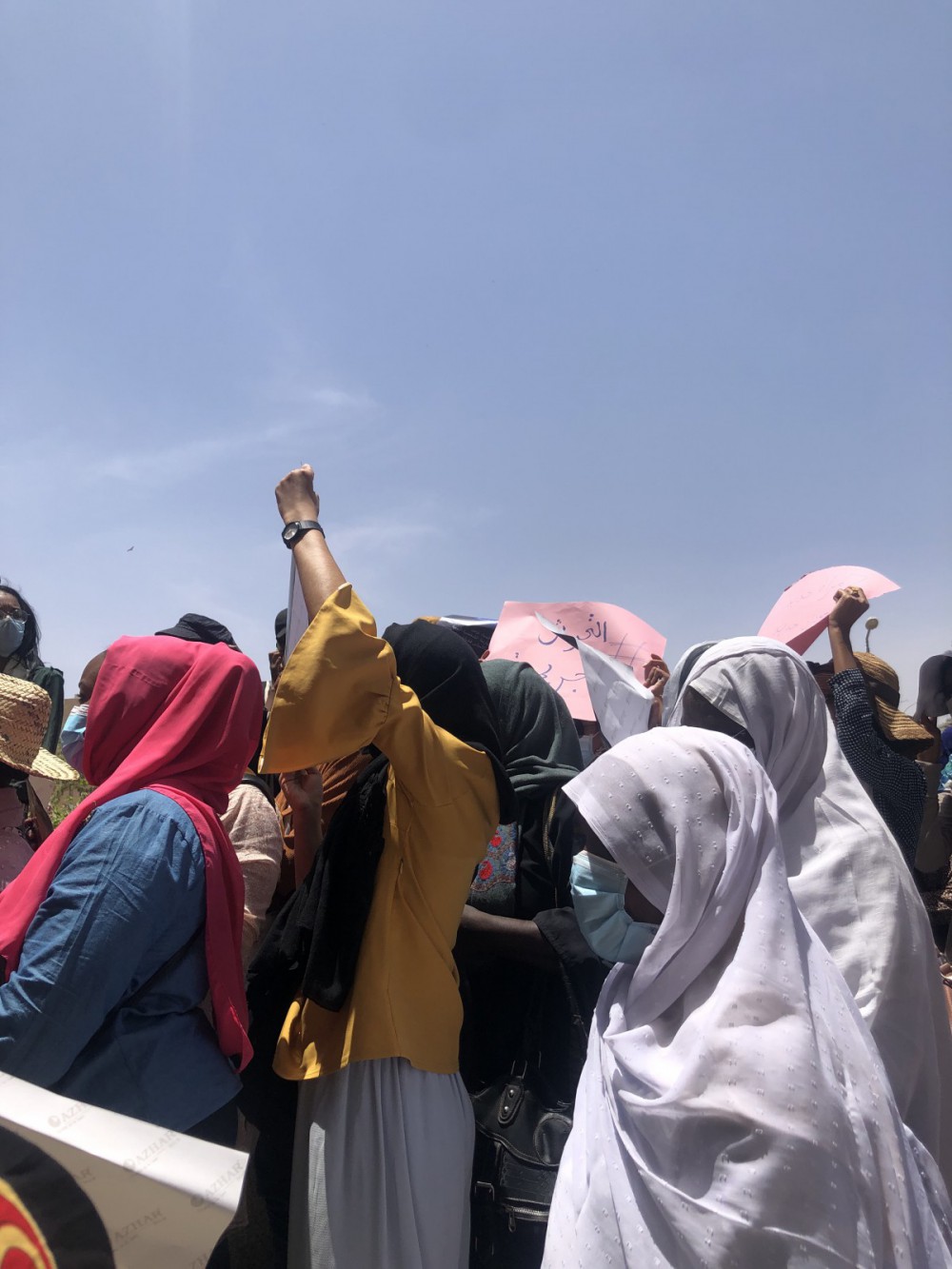
Through the committees, people came together to share resources, prepare for harsh weather, support families in need, and raise funds for various local causes. For those of us born and raised under Omar al-Bashir’s regime, the committees were the first body we knew that provided what is traditionally known as “government services,” including medical care, waste removal, funding for schooling, housing, and protection for those who need it.
But unlike government services, we could trust these efforts because they were delivered by people we knew. It’s much easier to care for people in times of crisis when you already know them; we learned this in 2019. For example, in the colder months, the neighbourhood committees knew which families needed support, be it food, transportation, housing, or clothes, and the committees discreetly provided them with what they needed, no matter their political affiliations.
If the people were going to defeat al-Bashir’s military regime, our movement would need an unshakable foundation.
The neighbourhood committees were born of a deeply collectivist society, the same culture that birthed the strong labour union tradition that has been a part of Sudan’s societal fabric since the late 1940s. Organizers used a horizontal leadership structure, divided tasks according to ability and skill, and focused on movement sustainability rather than nepotism or hoarding power.
Post-2018: the resistance
Dinan The protests that began in December 2018 were no longer individual sparks, but a revolutionary movement. Protesters varied their methods of resistance to include civil disobedience like strikes, sit-ins, and peaceful protests that halted the economy, disrupted the flow of capital, and seized key means of production – reminding government officials and the military who actually holds power.
Ola After months of regular civil disobedience and protests demanding the fall of military rule, millions lined the streets on April 6, 2019, for a millions march. The images and videos of millions of people pouring in from all the cities around Khartoum chanting in a unified voice for freedom, peace, and justice, are bone chilling. The date – April 6 – is itself significant because on the same day in 1985, the people overthrew former president Jaafar Nimeiri’s military dictatorship. To this day, Sudanese people celebrate April 6 for marking the resistances to not one but two military heads of government.
Dinan The millions march triggered the infamous military headquarters sit-in, which involved roughly 2 million people, more than a third of Khartoum’s population. Revolutionaries and supporters pooled their resources to ensure that protesters were able to keep resisting: strikers who were well-off ensured families that relied on day wages were cared for throughout the strikes and Khartoum’s community made sure protesters were fed, protected, and supported.
The protests that began in December 2018 were no longer individual sparks, but a revolutionary movement.
Ola During the resistance, labour unions and gender- and ability-based unions remained well organized despite the censorship and congregation limitations put in place by al-Bashir’s regime. Allied with neighbourhood committees, the organizations brought people together across occupations, tribes, gender, and socio-economic backgrounds, and a new level of resistance became possible in Khartoum.
Women were integral to the longevity of the protests. The sit-in lasted until June 3, and was during Ramadan, so while fasting themselves, they were on the front lines of protests and feeding hundreds. It was mainly women lawyers and doctors leading humanitarian interventions. Army men and the RSF would strategically target women for their revolutionary potential, and women suffered mass rapes, killings, and unlawful detention at the hands of the regime.
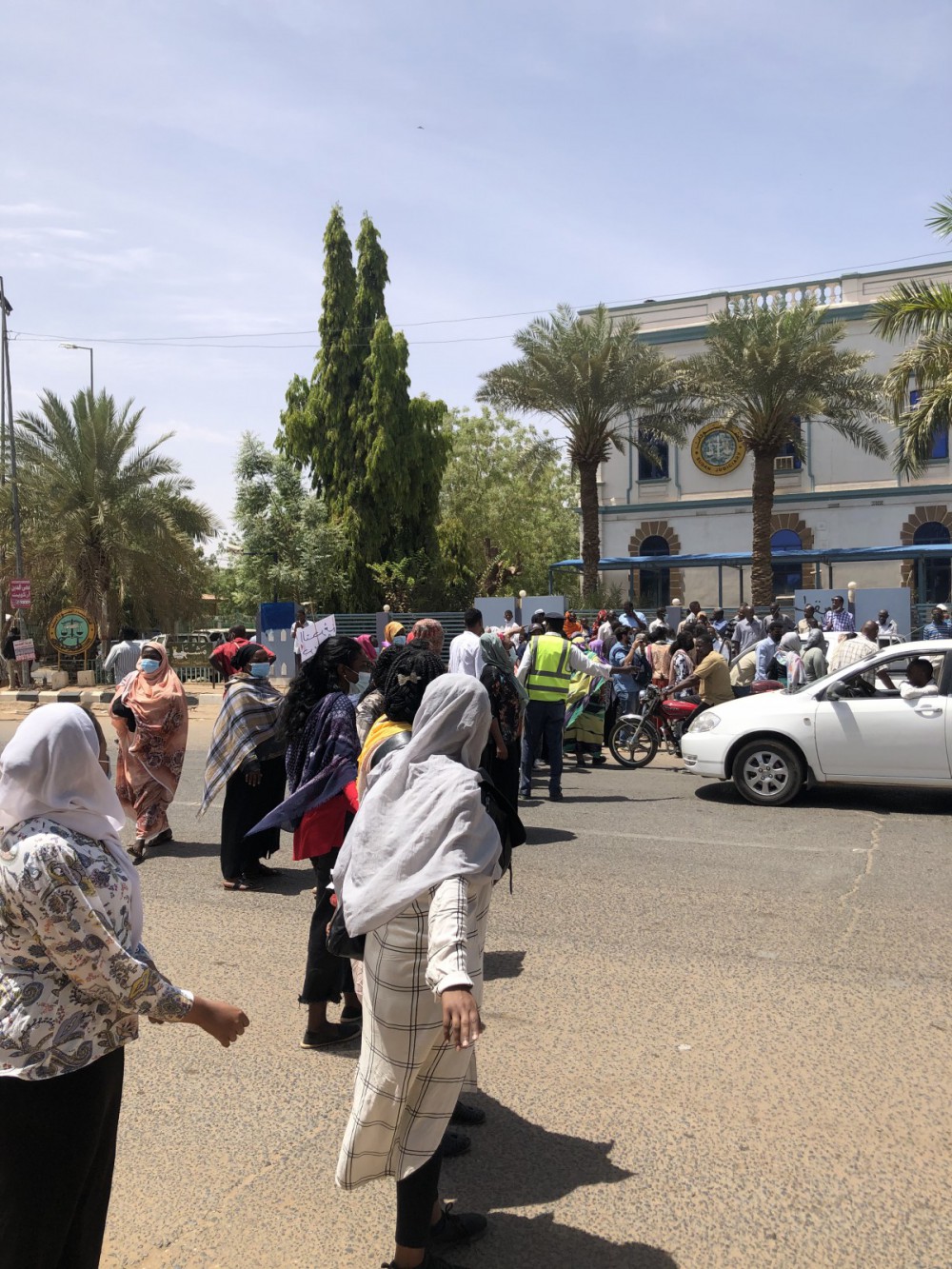
The Sudanese Women’s Union, one largest gender-based unions in Africa, was an infallible force in 2019. Initially created in 1952 to fight back against British colonial oppression, the group has since fought against gendered oppression in Sudan, playing an integral role in mobilizing women workers around resistance activities and setting the agenda at the negotiation tables for what a new Sudan that centres women’s rights and needs looks like. During digital blackouts, women street vendors were integral to spreading information about resistance actions and safety routes to avoid the military. It was even an image of a woman (Alaa Salah) by a woman (Lana Haroun) that made the protests go viral the first time!
Protesters varied their methods of resistance including strikes, sit-ins, and protests that halted the economy, disrupted the flow of capital, and seized key means of production – reminding government officials and the military who actually holds power.
While protesters occupied the military headquarters, solidarity marches were taking place all over the globe, including one in Toronto, at which we both spoke at and organized around in the following weeks. At this point in the revolution, on top of violent crackdowns on civilians and numerous attempts to infiltrate the sit-in, the military frequently engaged in digital warfare against protesters, shutting off the internet, surveilling protesters on social media, and disrupting international and domestic phone calls. But protesters used savvy communication and social security tactics to get around digital blackouts, like using private networks to share information internationally and an engaged diaspora to disseminate it.
One of my favorite adaptations was how protesters communicated incoming danger with each other during digital blackouts. Youth were stationed at light poles around the sit-in, and when they saw a military tank or an attempt at attack, they would notify those within the sit-in by hitting the pole they were stationed at causing the sound vibrations to echo, and the next person would hit their pole, and so on and so forth until the warning reached the sit-in.
My cousin’s favorite part of the movement was walking into the sit-in knowing that she was safe because no weapons – or even compact powders with makeup cases, which could potentially be broken and made into a weapon – were allowed in. When entering, she’d always be greeted by community members with a smile and poem or a chant. After decades of oppression under Islamic fundamentalist dictatorships, women organizers made their safety in movement spaces a priority, which was vital to the strength and longevity of the movement.
The sit-in was not only a refusal to abide by al-Bashir’s military dictatorship, it was also a place where people imagined the world anew.
After just five days of the sit-in, on April 11, 2019, protesters successfully deposed Omar al-Bashir, who had ruled Sudan for nearly 30 years. But the sit-in was not only a refusal to abide by al-Bashir’s military dictatorship, it was also a place where people imagined the world anew.
A cell photo of protesters scaling a bridge outside Sudan’s military headquarters during the sit-in in 2019.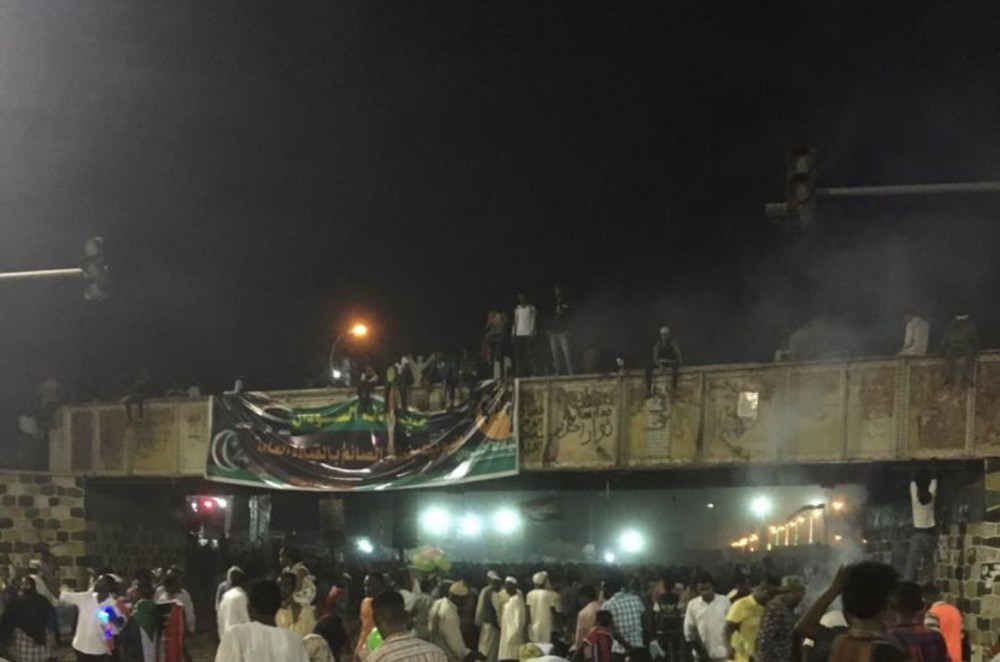
After al-Bashir’s removal, the Transitional Military Council (TMC) was put in place, and through the coalition Forces of Freedom and Change (FFC), protesters negotiated to form a transitional government. Protesters on the ground and in the wider diaspora wanted not only a change in leadership, but an entirely civilian-led, community-informed government.
In the months following the sit-in, the FFC negotiated with the TMC and were unrelenting in their demand for civilian rule. They demonstrated one of the demands of the revolution: a civilian-led government with gender parity. In July the Transitional Sovereign Council, a joint civilian and military government, was formed. The neighbourhood resistance committees kept organizing, circulating lists of potential candidates publicly for mass participation in electing the new governing body as well as keeping mutual aid networks alive. Though the sit-in was over, the tradition of civilian disobedience and ongoing political education of resistance persisted.
Lessons for organizers in so-called canada
Dinan A lot has happened in Sudan since 2019. The people have continued to demand a civilian government, but are up against the power struggle between the Sudanese Army and the RSF, which turned into a full-blown war between the two powers in mid-April 2023. This has caused mass displacement and civilian casualties. As the catastrophic war unfolds and global powers prey on Sudan’s resources, neighbourhood committees are still the only bodies looking out for Sudanese civilians, who are now facing an unprecedented level of violence. While we haven’t yet achieved a government without military rule, the movement for a civilian-led government remains strong and the neighbourhood committees are resilient.
The military government and armed militias inflicted such violence on Sudanese civilians during the 2019 protests because of the incredible power we wield when we’re united. When I speak with non-Sudanese organizers in Canada, I tell them about Sudanese people not as a cause to pray for, but as a force to learn from. The world’s eye turns to Sudan during news cycle peaks, drawing sympathy and thoughts and prayers, but organizers in so-called Canada are missing out on the opportunity to learn from us, even though we’ve been here organizing for decades.
Ola Often when I bring up communism with activists in Canada, they assume I’m discussing a European understanding of communism, completely disregarding the centuries of communal organization in African and other Indigenous communities. In the West, we don’t take the time to get to know our neighbours or understand their needs and how we can serve each other. Caring for our neighbours is the first step toward creating a shared understanding of community and building the foundation of our movements.
Though the sit-in was over, the tradition of civilian disobedience and ongoing political education of resistance persists.
We learn from mass movements happening around the world through our social media, or the news if we are lucky and the media decides to cover them. Sudanese and other African activists here are doing an excellent job of responding to calls for solidarity from their communities, and leftist communities everywhere have a lot to learn from them about building an international base of revolutionary solidarity that de-centres western paradigms of societal organization.
Though these movements are geographically far away, our freedom is intertwined. Just as the fight for Indigenous sovereignty stretches from so-called Canada to occupied Palestine, the fight for Black lives against police brutality spans from the streets of Toronto to those of Sudan. Oppression anywhere strengthens oppression everywhere and if we are going to win this fight for our lives, our resistance to oppression in our neighbourhoods must be as strong as that to oppression on the other side of the world.


